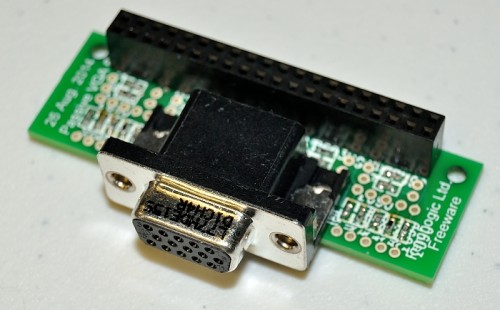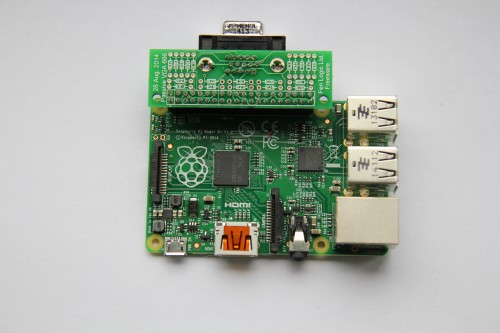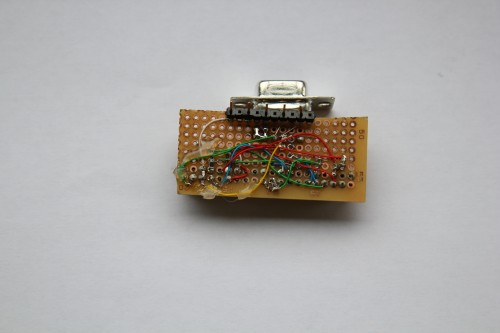|
It almost seems like tablets can be lumped into two distinct categories these days: “iPads” and “other tablets”; so if you don’t have one, you have the other. Those in the know will tell you this isn’t true, and that there are plenty of quality contenders in the tablet game –whether you are interested in an iPad or not. To this end, Sony has released their latest contender, the Xperia Z3 Tablet Compact. The Xperia Z3 Tablet Compact is certainly portable, weighing in at 9.5-ounces (270-grams) and measuring only 0.25-inches (6.4mm) thick –while maintaining an 8-inch (213.4mm by 123.6mm) screen. Powered by basically the same technology as the Z3 smartphone, Sony’s new tablet features a quad-core, 2.5GHz Qualcomm Snapdragon processor, Adreno 330 graphics, 3GB of RAM, and 16GB of storage memory (that can be increased up to 128GB by using microSD cards). For those interested in photography, the Z3 Tablet Compact has an improved 8.1-megapixel imager. Of course, if you happen to love console gaming, Sony devices support PS4 Remote Play –meaning you are able to use your tablet to control your games on the Playstation 4. Plus, Sony’s software comes with extras like their DSEE HX technology that will upscale the quality of your MP3 and AAC music files (plus, you can perform one-touch mirroring if you happen to have a Sony Bravia TV to pair it with). Whether it competes nimbly with the iPad remains to be seen, but there is no question that Sony knows how to make an elegant device with value-adds… so for anybody already brand-loyal, the Xperia Z3 Tablet Compact provides a very reasonable option. Pricing hasn’t been announced yet, but the device will ship in black or white (with LTE or Wi-Fi only options) in the fall of 2014.
Sony Xperia Z3 Tablet Compact Takes Aim at iPad is a post from: Good e-Reader |
A Semi-automated Technology Roundup Provided by Linebaugh Public Library IT Staff | techblog.linebaugh.org
Wednesday, September 10, 2014
Sony Xperia Z3 Tablet Compact Takes Aim at iPad
Sony Digital Paper DPT-S1 Has a 10 page Limit on Notes
|
The Sony Digital Paper is a massive 13.3 inch PDF reader that is chiefly geared towards note editing and editing. This is the first device Sony has made that leveraged its decade of experience in the e-reader sector to carve out a niche in the business world. Recently, I was tremendously dismayed to find out that this $1,100 device only has a ten page limit in note taking. There are two ways that you will use the Sony Digital Paper on a daily basis; editing PDF files and making notes. Note taking is especially excellent because you can write, while resting your wrist on the screen and it only recognizes the stylus. When you craft a note, you can add an annotation, which either can be a written with the stylus or with the keyboard. When you are all done taking notes, using the standalone app, it is automatically saved as a PDF file, you can then export to your PC or send to Dropbox. Sony markets the Digital Paper towards students, lawyers and entertainment professionals. The type of people that are known for taking a massive amount of notes on a daily and weekly basis. The ten page limit on an individual PDF document makes little sense, as power users will easily exceed this threshold. Sony Digital Paper DPT-S1 Has a 10 page Limit on Notes is a post from: Good e-Reader |
URL: http://goodereader.com/blog/e-paper/sony-digital-paper-dpt-s1-has-a-10-page-limit-on-notes
Dell Launches Ultra-Thin Venue 8 7000 Tablet
|
I’m impressed with any manufacturer willing to release a new product the day after a major Apple event. This go-around, Dell has announced that they have the “world’s thinnest tablet” in their new Venue 8 7000 device. Featuring an 8.4″ screen-size, the profile of the Venue 8 7000 is only 6mm thick (thin). There are other tablets that come in close: Samsung’s new Galaxy Tab S is 6.6mm thick, while Sony has their Xperia Z3 Tablet Compact that measures in at 6.4mm. For the moment, it seems like Dell is winning in this particular arena, but the rest of the tablet looks pretty decent as well –boasting a screen resolution of 2560×1600, RealSense digital photography technology (that is able to create a depth map of an image, giving a rudimentary understanding of object positions located across 3D space instead of only a 2D plane), and an Intel Z3500 quad-core CPU (running between 1.33GHz to 2.33GHz depending on the model). There isn’t a price yet, or a specific release date –other than Intel is suggesting it will be available in time for the holidays this year. Intel had more big news besides the release of a Dell-branded tablet: the technology giant also announced that they are working with Google to create the “Intel Reference Design for Android,” intended to serve as a developer tablet that will help manufacturers get their new products to market faster. Built with pre-approved components, the reference tablets will ship ready to pass Google Media Services standards –giving would-be OEMs something to use as a base. Putting a big name like Intel so firmly behind Android can only mean good things going forward for the operating system.
Dell Launches Ultra-Thin Venue 8 7000 Tablet is a post from: Good e-Reader |
URL: http://goodereader.com/blog/spotlight-on-android/dell-launches-ultra-thin-venue-8-7000-tablet
HarperCollins Starts Selling eBooks in China
|
HarperCollins has struck new partnership with JD.com and China National Publications Import and Export Corporation. Starting today, over 800 backlist eBook titles will be available in English. The Chinese publishing industry generated an astounding $42.89 billion in 2013 and should reach $57.74 billion in 2014. This is the first time HarperCollins has entered the market in a digital capacity. Some of the titles available include; The Alchemist by Paulo Coelho, Divergent by Veronica Roth and several titles from bestselling authors C.S. Lewis, Lemony Snicket, Beverly Cleary and Neil Gaiman. Additional titles will be rolled out in the coming months. "JD.com has been a key partner in selling HarperCollins print books in China for years and we are happy to work with them on our e-book business," said Chantal Restivo-Alessi, Chief Digital Officer for HarperCollins Publishers. "By expanding our international e-book distribution we're opening up a new market for our authors' works." "The e-book market in China is poised for tremendous growth. We're excited to bring great content from HarperCollins to our readers," said Haifeng Yang, Head of Books, Audios and Videos from JD.com. HarperCollins Starts Selling eBooks in China is a post from: Good e-Reader |
URL: http://goodereader.com/blog/e-book-news/harpercollins-starts-selling-ebooks-in-china
eBook Subscription Service Oyster, Celebrates 1 Year Anniversary
|
The publishing industry has been trying to crack the Netflix for eBooks concept for a number of years. Oyster is one of the bright spots, offering 500,000 eBook titles and has established relationships with over 1,600 distinguished publisher partners. Today, Oyster is celebrating their one year anniversary and offers some key metrics on their ecosystem. 500,000+ titles– including New York Times and national bestsellers like Steve Jobs, Under the Dome, The Happiness Project, Beautiful Ruins, The Great Gatsby, Onward and hundreds of thousands more. 1,600+ publishers – from Harper Collins and Simon & Schuster to prestigious independent houses and self-publishing aggregators, including Houghton Mifflin, Rodale, Melville House, Other Press, Smashwords and Verso. 6 platforms — after an iOS-only launch, Oyster is now accessible on iPhone, iPad, iPod Touch, Web, Mobile Web Reader, and Android! You can now find 46 genres, 1,289 lists of books, and more than 200,000 authors on Oyster to satisfy any type of reader. eBook Subscription Service Oyster, Celebrates 1 Year Anniversary is a post from: Good e-Reader |
Pocketbook Ultra Unboxing Video
|
The Pocketbook Ultra is the newest e-reader on the market and it breaks a ton of conventions. It has a rear facing 5 megapixel camera and page turn buttons that are on the back of the unit. Readers will dig the six inch e-ink Carta touchscreen display, which will provide faster page turns and less full page refreshes. Today, we check out the Ultra and give you a sense on what the commercial packaging looks like and finally we power it on for the first time.
Pocketbook Ultra Unboxing Video is a post from: Good e-Reader |
URL: http://goodereader.com/blog/electronic-readers/pocketbook-ultra-unboxing-video
New Survey Looks at Digital Textbook Adoption
|
Vital Source and the Ingram Content Group announced the results of its annual survey revealing how students and professors are embracing digital textbooks. The survey talked to 500 students and most are hopelessly addicted to their e-reader, smartphone or tablet. 45% of students said they usually do not go more than 10 minutes without using some form of technology during an average school day. It is certainly apparent that digital textbooks may be on the rise, as 62% of students are using them regularly. 44% use mobile learning such as courses utilizing apps, social media and productivity tools. 33% use flipped classrooms including courses discussing video lectures watched prior to class What are the reasons why students seem to be gravitating towards digital texts? 31% suggest the top benefit is that they make lessons easier to understand; 23% say they help them complete assignments more quickly; 21% say digital textbooks help them stay more organized. One of the big reasons why students seem to be embracing the digital variants is chiefly due to their professors. 67% of students say their professors frequently recommend they purchase the e-text versions, compared to 52% in 2013. Digital textbooks have really matured in the last few years, as Amazon and Google have both entered the market. Not only can you buy textbooks and read them in any of their official apps, but you can rent them for a day, week or semester. Renting the digital version saves students a copious amount of money in the long-term. New Survey Looks at Digital Textbook Adoption is a post from: Good e-Reader |
URL: http://goodereader.com/blog/digital-education/new-survey-looks-at-digital-textbook-adoption
Gert’s VGA Adapter
| The Raspberry Pi has an HDMI port to connect a display. If your monitor only has VGA, you have to use an adapter. Because this requires a digital-to-analogue conversion, those adapters can be quite pricey, and they can draw lots of power. So our friend Gert van Loo (who developed the Alpha board that became the Raspberry Pi, and the man behind the Gertboard and Gertduino) has created a VGA adapter that uses the Pi’s GPIO. This wasn’t possible on the Model A or B, but now the B+ exposes 40 GPIO pins, there’s more to play with. As well as just allowing you to connect a VGA monitor natively, it also means you can use it as a secondary monitor alongside HDMI. And unlike composite video, the DPI interface can be run independent of the HDMI. The software for dual screens is still under development, but we expect that to arrive in the next couple of weeks. Running two screens at maximum resolution will consume SDRAM bandwidth, and is yet to be tested. (And there’s a catch: as the board uses most of your GPIO pins, you lose access to them.) The VGA output supports the same resolution as your HDMI one: from 640 x 480 up to 1920 x 1024 at 60fps. At the highest resolution the pixel quality is almost as good as HDMI. The adapter uses a simple resistor ladder network as a digital-to-analogue converter, so the colour quality depends on how well-balanced your resistors are. There is slight colour banding, and with 6 bits per channel you have a maximum of 262144 colours. Dom has been working on the software side and the new DPI (read: VGA) driver software has been added to the latest release. “Where can I buy one?”, I hear you ask. Currently, nowhere. But Gert has made the VGA adapter open hardware, so you can make it yourself, or find yourself an enthusiastic partner and have it made. All the data is in the public domain on GitHub. Besides the manual and schematics, you will also find the database for the PCB and the Gerber files. The PCB design supports both through-hole and SMD parts. The design consists of:
The cost is not prohibitive, but having a single PCB made is rather expensive, so you might want to collect a group of interested people and order a batch; if you’re interested in doing that, head over to the forums and see if you can organise a group buy. See vga666 at github.com/fenlogic/vga666 (it’s 6 colours per channel, hence 666…) Gert’s looking to get the PCBs produced, and hopefully the manufacturer will be able to put them on sale (we’ll update with a link) – but they’re so easy to make we anticipate they’ll be generally available before long anyway. Gert says he expects in due time that a far-east manufacturer will see fit to sell them for two dollars. Want to see a prototype? Of course you do. |
People Still Love their Sony e-Readers
|
Sony has abandoned making new e-readers and fully closed down their online bookstore in North America, Europe and Australia. Sony always employed high build quality in their complete line of electronic readers, users still cling to their old models, as if they were a precious metal. e-Reader technology does not enjoy the same robust innovation that we see in smartphones, tablets and smart watches. Apple, Google, Intel, Nvidia Samsung, LG and a host of others pour millions into new technologies that make products like the iPhone 6 Plus, Apple Watch or the Pebble possible. If you see someone with a four year flip phone, they tend to draw negative looks. e-Reader owners are a different breed, and tend not to be social outcasts if they rock a device from the same time period. Amazon, Barnes and Noble, Kobo, Icarus, Pocketbook, and Onyx tend not to lead the charge in e-reader innovation. This is mostly because its companies like e-Ink, Neonode, Sony, Qualcomm and Texas Instruments that develop all of the tech that goes inside the readers. They design everything from the processors to the e-paper or touchscreen technologies. All of the major players in the e-reader sector tend not to pour the type of money in new technologies, because not enough units are manufactured or have true mass market appeal like tablets or smartphones. The slow incremental update cycle for e-readers does not really give people a reason to upgrade. Why are readers so enamored with a company that have completely abandoned the consumer sector? A number of users have weighed in from all four corners of the internet. Ctop said “I started with the T1, got a T2 after that broke and just bought a T3 as a backup device. But in fact the T3 is so nice, that I will keep the T2 as backup instead. Over the years I have spend many hours with my Sony Reader and certainly don’t want to leave home without it. Especially with the T3 that is easily possible because it is such a small and light device. Although I also have an iPad, I much prefer the Sony for longer reading.” katenepveu weighed in “when my Sony ereader died I went on eBay and bought the exact same one. (Someday I’ll have to get used to a new eInk-style reader” Ripplinger has a panache for the older models “I still love my Sony 350s and it’s still the reader I judge all others by (nothing comes close). The design of the hardware is beautiful (especially since I managed to get my hands on 2 blue ones!), the software is rock solid (I don’t think I’ve had to do a reset more than 2x in over 4 years, and that was due to a badly formatted epub), and when you add PRS+ to the x50 line of readers it can’t be beat.” Carolyn gushed “I have only had Sony ereaders and while I’m sure kindle is fantastic..I just love my Sony for it’s versatility – I am just an ereader only person, don’t need the gadgets…but want to read all electronic publications with ease and can do that with Sony. epub, pdf….etc. It takes many formats and is a pleasure to use. I can read old .pdf’s etc that someone gives me and usually, it works fairly well. I buy my share of books from SONY regardless… and I note how many more books I read since I have had an ereader. I hope these never go away! ” Wrap Up Sony e-readers are still being sold through merchants that still have not run out. There is also a vibrant reselling market via eBay and Amazon for users looking to buy a backup model or two. Good e-Reader has reviewed over 119 e-readers over the years. When I first got into the review game, it was well before Barnes and Noble or Kobo hit the market. Suddenly, CES 2010 was the tipping point, where suddenly there were hundreds of companies getting into the market. Some are still around, but others just capitalize on crazes, like phones, tablets, and now wearable tech. A few of the players still around just outsource everything to China and slap their own label on it. Sony has always led the charge in e-reader innovation. They were the first ones with a front-lit display, the first ones to adopt a touchscreen and the only e-reader to integrate Overdrive, for easy library book lending. Their hardware has always been a shining beacon of hope in the dirge of cheap and crappy devices. It is no small wonder why users still love their Sony e-readers, even if Sony has given up on the users. People Still Love their Sony e-Readers is a post from: Good e-Reader |
URL: http://goodereader.com/blog/electronic-readers/people-still-love-their-sony-e-readers










